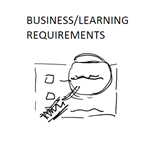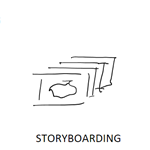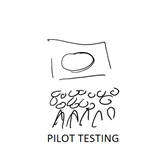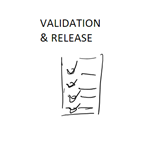Course & Workshop Development
Improving Competencies and Skills — Advancing Performance and Careers
We serve in the dual roles of project manager and instructional designer. Our IT background – the first LMS project was in 1999 – informs our awareness and flexibility with learning technologies. Our coaching background informs the design. We translate business requirements into learning requirements and then bridge the gap with the developers. An agile approach keeps things aligned and moving in quick creation-review cycles.
Project Summaries
We’ve created these types of workshops on multiple occasions. The biggest challenge is the tendency for attendees to want and expect a formulaic approach and an easy fix. Anyone who truly uses a S.M.A.R.T. goal-setting approach knows that it is a bit of an art and requires being able to make trade-offs. There is no one right way.
In addition to the standard background information, we link the concepts to other knowledge areas (e.g. project management) and even everyday life situations beyond business to show what is simple. Then we spend even more time on the complex realities of communication, alignment, work breakdown, and trade-off decisions. Interactivity is provided by placing attendees in dyads and triads to address and discuss various situations.
We also address the skills of providing feedback because in reality, one cannot separate the conversational elements of goal-setting and feedback – the two are forever intertwined, and courses that do not combine those elements are, in our opinion, only addressing half the issue. We look at the different components of clear communication, timing, and how various models (e.g. STAR; SDI) all bring in the same basic elements and how to look past any particular model to the underlying, timeless truths.
A systems training course was not achieving business and learning objectives. The materials were heavy on text and topics did not flow. Exercises were few and positioned at the end of long lecture segments. Attendee competencies were not fully addressed. Perhaps you’ve sat through similar?
We inserted in a high-level introduction that tied the system features and capabilities to the needs of the business and to industry best-practices, not just the software learning needs. We also expanded the learning requirements so that the necessary system administrator competencies of problem-solving, attention to detail and courage were addressed.
That was accomplished by including train-the-trainer and role-playing exercises, and by using games and puzzles to bring out teamwork and a bit of competition. We also utilized a live-graphics approach where concepts were drawn in front of attendees. No mind-numbing graphics here. That real-time approach helped keep attendees focused and also improved comprehension regarding the underlying data concepts (e.g. cause-effect) of the system.
This activity brought 21 of the leading medical experts in chronic disease treatment and tobacco dependence to the AMA offices in Chicago. The objective was to generate ideas and proposals on how tobacco treatment could be designed from the perspective of a chronic disease, which is more thorough and end-to-end than the typical one-off and isolated interventions typically seen. The results of that facilitation were published by the AMA in a whitepaper and posted on their website.
Websites are more than what you see. They also require an understanding of what lies beneath and how its structure impacts not only the visual design but the ongoing management of that website.
In 2001, the website of the Chicago chapter of the Project Management Institute – one of the largest chapters in the world – was looking and behaving very dated. An analysis of the navigation and the underlying structure showed many areas and opportunities for improvement. We put together a proposal that justified and introduced new navigation, content, features with the additional benefits of simplifying the underlying structure for ease of information management and control. We provided the RFP structure, led the use case team to develop the use cases and worked with key members of the board to move the project forward.
50% of the directories all of the redundant content files were eliminated. The flow of content and navigation was streamlined to be more coherent and align with user expectations and needs. New features such as ad space were included to provide income opportunities. Linking to calendaring and meeting services was introduced. The improved look and performance heightened the perception of the organization by visitors to the site and was instrumental in ramping up the membership of the chapter. And the website was actually a simpler design underneath than the old one.






